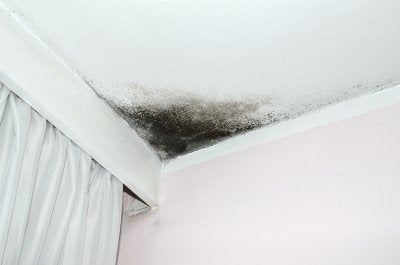-
Understanding the Mold Inspection Process
If you are experiencing headache, fever, congestion, or fatigue, there is a chance that your body is reacting to mold exposure. Fortunately, these symptoms will go away if you find the source of the mold and eliminate it. The first step to treating mold is to schedule a mold inspection near San Francisco . In this article, we will review the mold inspection process and why it is so important.
Detecting Mold
The first step in the mold inspection process is realizing that you need a mold test. Most people realize they need a mold test when they smell mold—it has a distinctive odor that’s musty and damp. Other people recognize the need for a mold inspection when they experience mold symptoms like the ones listed above, or when they see mold on the walls, in corners of the room, or on objects.
Locating Mold
When the mold testing specialists arrive in your home, they will look in some of the popular hiding places for mold. It is common for mold to grow under carpets or carpet pads, behind draperies and wallpaper, under wood, behind drywall and wallboard, on pipes, above ceiling tiles, and in ductwork.Cleaning Mold
Getting rid of mold entails both removing it and eliminating the conditions that caused it to grow. Determining what type of mold you have is not as important. Moldy areas must be treated with biocide; otherwise, mold can continue to make you sick even after it dies. To keep mold from growing back, dry wet spots within 48 hours, and keep your indoor humidity between 30 and 50 percent.Post-Clean Test
Mold testing is a good way to make sure your home or business is mold-free after a mold cleaning. At-home mold-testing kits do not provide the level of detailed testing that comes with a professional mold assessment. A professional mold test is especially important if your home has suffered from water damage, as it is very difficult to fully test for mold with an at-home kit. -
Spotlight on Mold Remediation
After a mold inspection uncovers mold on your property, you will need to act fast to prevent wood rot and other structural issues. In addition, a mold problem could lead to symptoms of black mold poisoning, including respiratory issues and allergy symptoms. To eliminate a mold problem, you can start by removing all moisture from your home. Your remediation specialist may also apply a fungicidal spray to the affected areas of your property. Once your mold removal procedure has been completed, you can check to see if it has been successful by scheduling a mold inspection. A post-remediation mold inspection will give you the peace of mind that comes from knowing that your mold issue has been fully eliminated. A company offering mold testing near San Francisco can provide you with a full range of inspection services. To learn more about mold remediation, check out this video from ABC Action News.
-
Is Your Mold Remediation Covered By Insurance?
When a mold inspection turns up a problem in your home, it is time to act fast and schedule mold remediation services. Your mold testing company will be able to pinpoint the precise location and extent of your mold damage. After your mold inspection near San Francisco, you may want to contact your insurance company to see whether your remediation will be covered by your insurance plan. With proper recovery, you can prevent your family from being affected by black mold symptoms. Here is a look at how to determine whether your mold remediation is covered by insurance.
Determine the Source of the Mold Problem
The first step of making a mold claim on your homeowner’s insurance is to uncover the precise source and
cause of your mold issue. Since mold requires moisture in order to grow, there is a good chance that your mold problem has been caused by a flooding leak, environmental problem, or other unforeseen issue. Depending on the type of insurance that you have for your home, the source of your mold problem may determine the amount of coverage you receive.
Investigate Your Insurance Policy
Once you have determined the source of your mold problem, your next step will be to investigate the terms of your homeowners insurance policy. Each insurance plan provides different forms of coverage, depending on the reason that your mold problem occurred in the first place. For example, if your mold problem was caused by neglectful maintenance, you may not have coverage.Consider Adding Mold Coverage
To ensure that you are covered for any future mold damage to your home, you may want to consider taking out additional mold coverage for your home. When you add mold coverage to your insurance policy, you will be covered for any scenario that could cause a mold infestation in your home. With this type of insurance, you can rest assured that you will be able to start on your mold remediation as soon as your inspection is completed. -
How Does Asbestos Abatement Work?
If you live in an older home, there is a chance that asbestos could be hiding somewhere on your property. If asbestos testing has uncovered a problem in your home, you will need to schedule immediate asbestos abatement services . Since asbestos is a highly toxic substance, your abatement contractor will use protective gear and other precautions to make sure that the technicians performing your removal are not subjected to asbestos exposure. During the removal, specialized tools will be used to completely clear away and seal any asbestos that is lurking in your home.
To ensure that your asbestos test has been performed to completion, you can hire a secondary asbestos testing company to perform a final inspection. If the asbestos test shows that no asbestos fibers are present in your home, you will be able to reoccupy your residence. A company offering asbestos testing in San Francisco can provide you with more information about your options for removal and inspection.

RECENT POSTS
categories
- Uncategorized
- Lead
- Mold
- San Francisco Mold & Asbestos Removal
- Indoor Air Pollution
- Mold Remediation
- Asbestos
- Safe Air Fast
- Mold Inspection
- Remediation
- Bacteria Testing
- Asbestos Testing
- Abatement
- Lead Testing
- Sewer Line
- Lead Survey
- Mold Testing
- Air Quality Inspection
- Home renovations
- Allergies
- Renovation Contractor
- Infographic
- lead paint
- Air Quality
- Air Quality Test
- Mold removal
